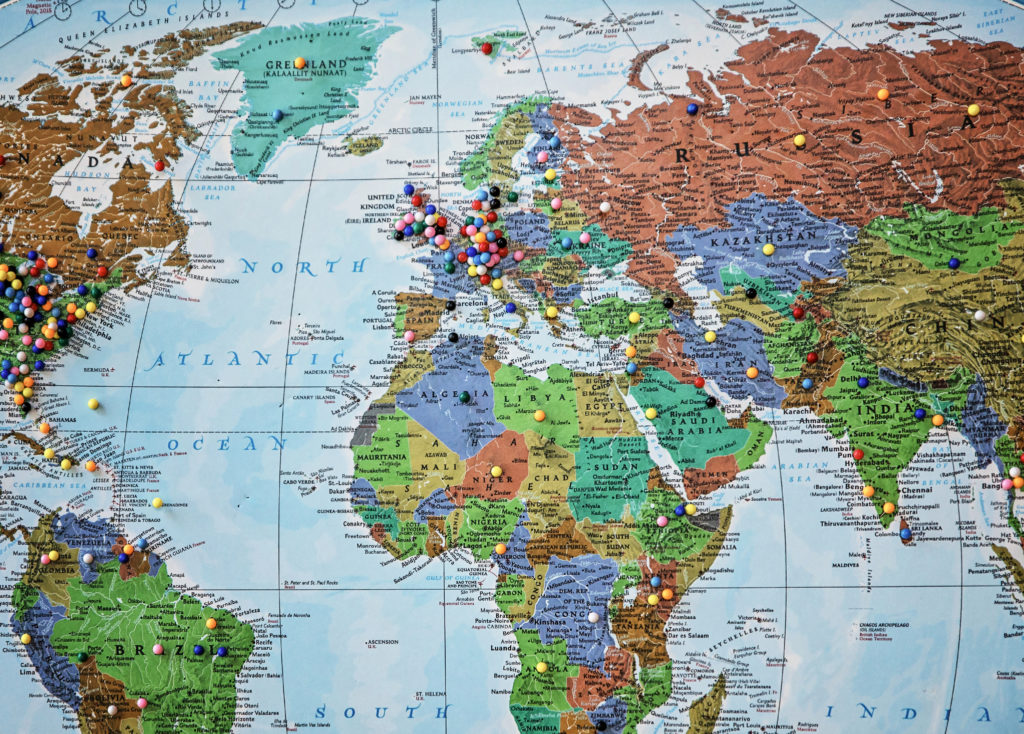The theological center of our faith hasn’t moved—that, of course, is always located in Christ and his word. But based on the global spread of and churches and their relative size and location, Christianity’s geographic gravitational center is moving. And it’s going away from the West.
It’s happened before. North Africa, Jerusalem, Antioch, and Istanbul were all once vibrant centers of Christianity from which missionaries were sent to the known world. Today, each of these regions has only a small Christian witness, and all of them are considered restricted-access countries in which it is generally illegal to openly share the gospel.
Now, a dramatic new shift is happening: Christianity, on average worldwide, has moved from the West to the Majority World—also known as the Global South or the Two-Thirds World. Whereas 99 percent of Christians lived in North America and Europe in the year 1800, today less than 30 percent live in these two continents.
Where We’ve Been
Though geographic shifts in the Christian movement are not uncommon in church history, this is the first time that it is moving southeast—and fast.

The map in the above figure demonstrates the growth of Christianity from the time of Pentecost (c. A.D. 30; cf. Acts 2) to the year 2100, based on projections.1 Each point on the map represents the statistical center for global Christianity during a given year. At each point on the timeline “one half of all Christians in the world live north of this point, the other half live south of the point. In the same way, one half live to the east of the point, and the other half to the west.”2
The center of Christianity shifted from North Africa and the Middle East to Europe and North America between AD 1400-1900, thanks to the Reformation and the modern missions movement. Western nations sent missionaries to the rest of the world. Pioneer evangelists like William Carey, Adoniram Judson, and Hudson Taylor became heroic household names. But as the West reached the rest of the world, Christianity became caricatured as a white man’s religion.
The trajectory took a dramatic turn in 1970 and the statistical center moved to the African nation of Mali, with projections moving to northwestern Nigeria by 2100. Now, Christianity is on its first-ever southeastern trajectory, and missions efforts must adapt.
Research conducted by the Center for the Study of Global Christianity at Gordon-Conwell Theological Seminary reveals that many of the top missionary sending countries are in the Global South. The United States still sends the largest number of missionaries, but per capita, several nations in the Global South are gaining quickly:
Of the ten countries sending the most missionaries in 2010, three were in the Global South: Brazil, South Korea, and India. The second “top ten” included six Southern countries: South Africa, the Philippines, Mexico, China, Colombia, and Nigeria. Southern missionaries go not only to other Southern countries but also to Northern countries, in a reverse of the pattern seen over much of the twentieth century.
Where We’re Going
Jesus told his disciples the “gospel of the kingdom will be proclaimed throughout the whole world as a testimony to all nations” (Matthew 24:14, ESV). Regardless of one’s eschatology, we are witnessing the continued fulfillment of this prophecy with the growth of the church in the majority world.
- Church planting movements are taking place across South America, Africa, and parts of Asia, and churches from these countries are now sending missionaries to other nations.
- Filipino missionaries are being sent to Islamic nations.
- Koreans missionaries are being sent to Europe.
- Nigerian missionaries are coming to North America—where the need for fresh evangelism continues to grow despite historic Christian dominance.
What does this mean for those of us in North America? The seismic shift in Christianity’s statistical center, far from spelling the end of the church in the West, presents us with unique opportunities in missions.
There is a great need for us to partner with our majority world counterparts as they take the gospel to the nations. We have much to learn, but we also have much to give. God has uniquely blessed the North American church with immense financial resources. John Piper has remarked, “All the money needed to send and support an army of self-sacrificing, joy-spreading ambassadors is already in the church.” He’s right.
Lest we think there’s no longer a need for boots on the ground, North American Christians are also uniquely poised to train to indigenous churches and believers, catalyzing the work God is already doing.
No longer is missions “from the West to the rest.” It’s “from everywhere, to everywhere.” If we Westerners can humbly pray, go, and serve the blossoming churches and movements across the globe with our own resources and skills, we will see great fruit as the gospel is proclaimed throughout the whole world.
1. Sun Young Chung and Todd M. Johnson, “Tracking Global Christianity’s Statistical Centre of Gravity, AD 33–AD 2100,” International Review of Mission 95 (2004): 167.
2. Ibid.




